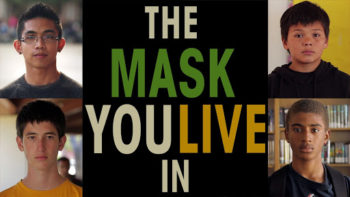What does it mean to be an ally in the workplace? As corporate culture continues to reckon with the #MeToo movement, is the initiative to enlist men as allies simply a box to check by the Human Resources team as they work towards their greater Diversity & Inclusion goals? Or, now that women make up a majority of the college-educated workforce for the first time ever, has the time finally come for meaningful change?
Earlier this month, more than 250 business leaders from large global corporations gathered in a ballroom in San Francisco’s financial district to learn how to be better allies to women and all traditionally underrepresented groups in the workplace. The Better Man Conference, organized by Ray Arata and the Inclusionary Leadership Group, conducted a day-long journey to engage men in diversity, inclusion, and belonging so that they could return to their workplaces to lead inclusively efforts.
The theme of the day was “get in the game”—reinforcing the idea that men stereotypically need sports metaphors to be able to relate to new concepts. More powerful was when Arata suggested that to make the most of the conference, attendees should expect that “vulnerability is not only accepted, but it’s expected.” Speakers shared what led them toward a path of allyship individually—often citing their wives and daughters as the driving force behind their change. Group exercises, panel discussions, and role playing scenarios addressed themes of unconscious bias, privilege, responsibility, listening and commitment to change. The highlight of the day was a presentation demonstrating the exciting use of virtual reality as a tool to help build empathy and compassion among work colleagues.
Examples abound on what women encounter in the workplace when men in positions of power don’t act as allies. Just yesterday, we learned that at last year’s Ernst & Young Women in Leadership conference, one presenter suggested that women dress modestly (because “sexuality scrambles the mind”), speak briefly, and above all else, have manicured nails. Even more appalling is that when asked to comment on the presentation, E&Y passed the buck saying that an external vendor was retained to conduct the training “because some women requested it.”
And in his new book Catch and Kill, investigative reporter Ronan Farrow recounts a meeting at NBC News during which MSNBC President Phil Griffin passed around an inappropriate photo of Maria Menounos after paparazzi snapped photos of her during a wardrobe malfunction. Asked by NPR’s Terry Gross on the program Fresh Air if he spoke up during the meeting to defend Menounos, Farrow admitted that he did not. This is a prime example of a common workplace situation in which a woman needed a male ally. And it likely happens hundreds of times each day in offices and conference rooms around the world.
As Ruth Whipmann suggested in a recent op-ed piece for The New York Times, perhaps it is time for men to start to #LeanOut in the workplace and adopt the female standard as the norm. “Instead of nagging women to scramble to meet the male standard, we should instead be training men and boys to aspire to women’s cultural norms, and selling those norms to men as both default and desirable. To be more deferential. To reflect and listen and apologize where an apology is due (and if unsure, to err on the side of a superfluous sorry than an absent one). To aim for modesty and humility and cooperation rather than blowhard arrogance.”
Take Action! Learn how to be a better ally. Attend the Better Man Conference in New York on 11/19. Get tickets here.



